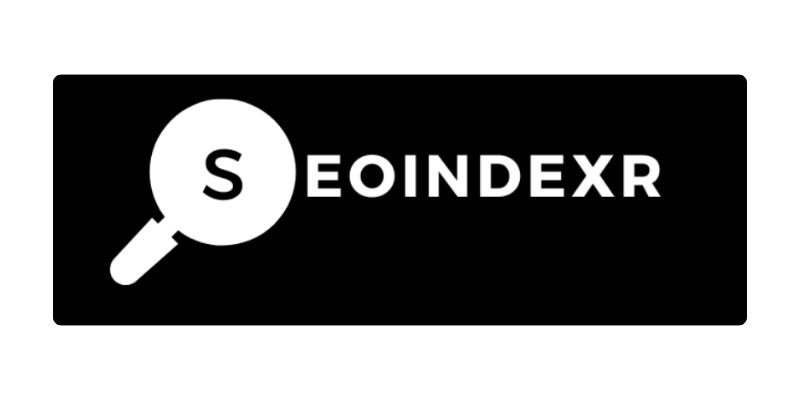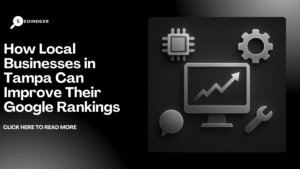How to Build EEAT and Brand Trust in the AI Era
As artificial intelligence (AI) continues to reshape the digital landscape, publishers, brands, marketers, and business owners must adapt to a rapidly changing environment. In particular, building EEAT—Experience, Expertise, Authoritativeness, and Trustworthiness—as defined by Google’s Search Quality Evaluator Guidelines, has never been more crucial. With AI-generated content flooding the web and trust in information sources becoming increasingly valuable, how can your brand stand out and build long-term credibility?
This blog explores effective strategies to build EEAT and enhance brand trust in the era of AI. Whether you’re an SEO professional, content creator, or business leader, this guide will offer practical steps to future-proof your digital presence.
Table of Contents
ToggleWhat is EEAT and Why Does It Matter?
EEAT stands for Experience, Expertise, Authoritativeness, and Trustworthiness. Introduced by Google as part of its Search Quality Evaluator Guidelines, EEAT is not a direct ranking factor but plays a significant role in how content is evaluated for quality. In 2023, Google added the first “E” in EEAT, “Experience,” emphasizing the importance of first-hand knowledge.
- Experience: Does the content creator have relevant personal experience on the subject?
- Expertise: Is the author a subject matter expert?
- Authoritativeness: Does the page or author have a reputation as a go-to source?
- Trustworthiness: Is the content accurate, safe, and reliable?
In the age of AI, where content can be generated at scale, ensuring that your content meets EEAT standards helps maintain credibility, foster user trust, and improve search engine visibility.
Challenges in the AI Content Era
AI tools like ChatGPT, Bard, and Claude are now capable of generating large volumes of content. While this increases output, it also leads to challenges such as:
- Widespread duplication and generic content
- Inaccurate or unverified information
- Lack of personal insight or original thought
- Difficulty in verifying author expertise and trustworthiness
These challenges emphasize the need for businesses to double down on authenticity, quality, and strategic efforts to build their brand’s EEAT profile.
Strategies to Build EEAT in the AI Era
1. Highlight First-Hand Experience
Incorporate stories, real-life case studies, and first-hand data in your content. Google prioritizes content created by those who actually experience the subject matter. Include behind-the-scenes footage, testimonials, personal photos, or video content.
For example, if you’re writing about telehealth, interviewing practicing doctors or sharing direct patient or doctor feedback lends significant real-world credibility.
2. Showcase Expert Authors
Assign content creation to qualified professionals in your field. Make sure bios are linked to content pages and include credentials, certifications, and social proof (e.g., LinkedIn profiles, media features). If possible, include expert quotes or co-written content with authorities in your industry.
3. Establish Authoritativeness via Backlinks & Mentions
Being cited by reputable sources increases your authority. Engage in outreach to educational institutions, industry publications, news media, and influencer blogs. Use tools like Ahrefs or Semrush to track backlinks and proactively build a solid backlink profile.
4. Ensure Transparency and Accuracy
Fact-check every piece of information, cite credible sources, and clearly distinguish between opinion and fact. Outline your editorial standards and make sure your content maintains an ethical tone. Include page metadata, author attribution, publish dates, and update logs for transparency.
5. Implement Clear Branding and UX
Trustworthiness also comes from how your brand presents itself online. Focus on technical SEO and UX improvements such as:
- HTTPS secure browsing
- Clean page design with no intrusive ads
- Fast-loading pages
- Mobile-friendly design
- Clear navigation and accessibility compliance
Make your About, Contact, and Privacy Policy pages visible and comprehensive—these lend legitimacy to your brand in search evaluations.
6. Use AI Wisely — Don’t Fully Rely on It
AI-generated drafts can serve as a starting point, but always edit with a human lens. Human editors must inject creativity, experience, nuance, and critical insight. Ensure that final content aligns with your brand tone, factual standards, and EEAT expectations.
Additionally, AI should not be used to generate sensitive or medical content without expert review, as misstatements may lead to misinformation and harm your credibility.
7. Build a Strong Brand Reputation Off-Site
EEAT isn’t just what’s on your website—it’s what others say about you. Focus on:
- Getting positive reviews on platforms like Google Business Profile, Yelp, and Trustpilot
- Being referenced on other authoritative websites
- Participating in forums, webinars, and industry panels
- Creating contributions to podcasts or news segments
8. Encourage User-Generated Content (UGC)
When users share positive experiences about your products/services through reviews, testimonials, or social posts, it strengthens perceived trust. Encourage customers to leave reviews and consider rewarding UGC through loyalty programs or giveaways.
How Google Evaluates EEAT in a Post-AI Landscape
Google’s Search Quality Raters use EEAT as a guideline rather than a direct ranking factor, but it influences how your content performs based on relevance and trust signals. In an AI-driven world, Google is emphasizing signals such as:
- Who is the author and are they qualified?
- Has the content been fact-checked or reviewed by experts?
- What kind of feedback (reviews/comments) does the page or brand receive?
- Are sources cited and external references included?
- What’s the history or reputation of the domain?
Prioritizing these areas can improve your SERP performance and brand reputation.
The Role of Structured Data in Enhancing EEAT
Structured data (Schema.org) helps search engines understand your content, authorship, and products/services more effectively. Adding schema can enhance your appearance with rich snippets, FAQs, and author profiles. Key types of structured data include:
- Article schema
- Author schema
- Organization schema
- Product reviews schema
- FAQPage schema
Monitor, Measure & Optimize EEAT Signals
Use analytics and SEO tools to track the impact of your EEAT strategies. Some KPIs to monitor include:
- Organic traffic and dwell time
- Backlink acquisition and referral sources
- Click-through rates on author profiles
- User engagement and return visit rates
- Brand mentions and review sentiments
Regularly audit your content and remove, update, or merge low-performing or outdated content (“content pruning”) to keep your EEAT profile fresh and relevant.
Final Thoughts
As AI continues to democratize content creation, true differentiation lies in human insight, personal experience, and brand integrity. EEAT is Google’s way of helping users find reliable, useful, and credible information—and it’s your gateway to digital trust.
By strategically combining AI technology with real-world expertise and authenticity, businesses can create meaningful, high-impact content that ranks well and resonates with users.
FAQs: Building EEAT and Brand Trust in 2024
What does EEAT stand for in SEO?
EEAT stands for Experience, Expertise, Authoritativeness, and Trustworthiness. It is a guideline used by Google to assess the quality and credibility of web content.
Is EEAT a ranking factor in Google’s algorithm?
While EEAT is not a direct ranking signal, Google’s algorithms are designed to surface content that aligns with EEAT principles. So it indirectly impacts your SEO performance.
Can EEAT be improved through AI-generated content?
AI tools can help with content ideation and drafting, but content must be reviewed, personalized, and validated by human experts to meet EEAT standards. Relying solely on AI can harm credibility.




